Missourians 21+ can grow marijuana legally at home. Here are some tips for beginners
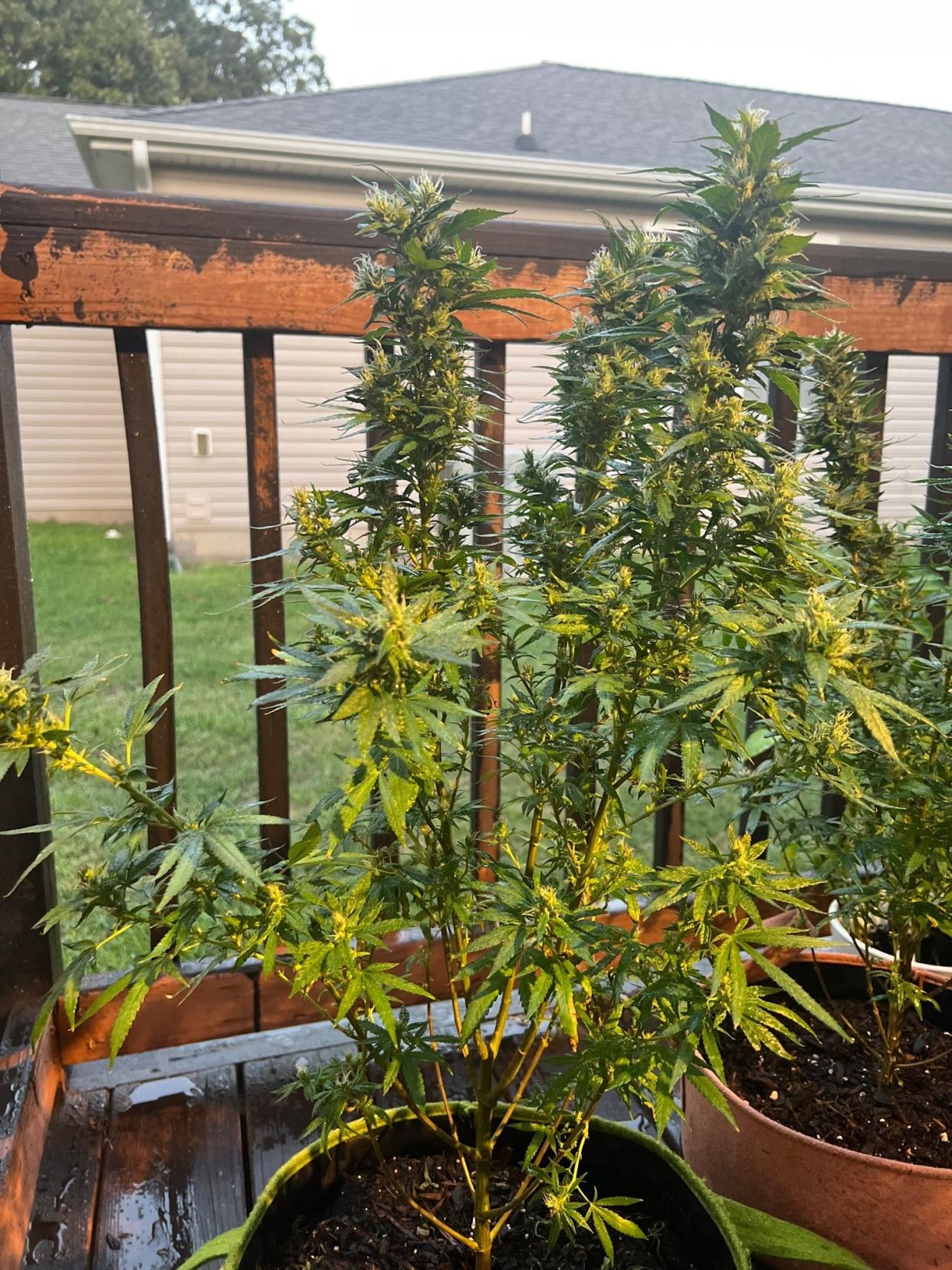
Cecil Cornish began growing marijuana plants in his home about this time last year, with little to no experience. He grew up with a love for gardening but marijuana cultivation was entirely new territory.
Prior to the legalization of recreational marijuana in Missouri, Cornish purchased marijuana from a dispensary in Arkansas. In the bottom of the bags of flower he purchased were seeds, known as bag seed. He enjoyed the flower he was smoking, so he decided to give cultivation a try with the extra bag seed.
In February 2022, Cornish planted 18 bag seeds in an egg carton. By the time he harvested in October, Cornish had four plants, each about three feet in height. From each plant he harvested about one ounce of flower, ending up with four ounces total. Cornish said he used the majority of the flower to make cannabutter, marijuana-infused butter.
Prepping for this year, Cornish said he feels more knowledgeable and prepared with adequate equipment to cultivate a successful grow. Although marijuana has a reputation as tenacious, Cornish described the cultivation process as "super hard."
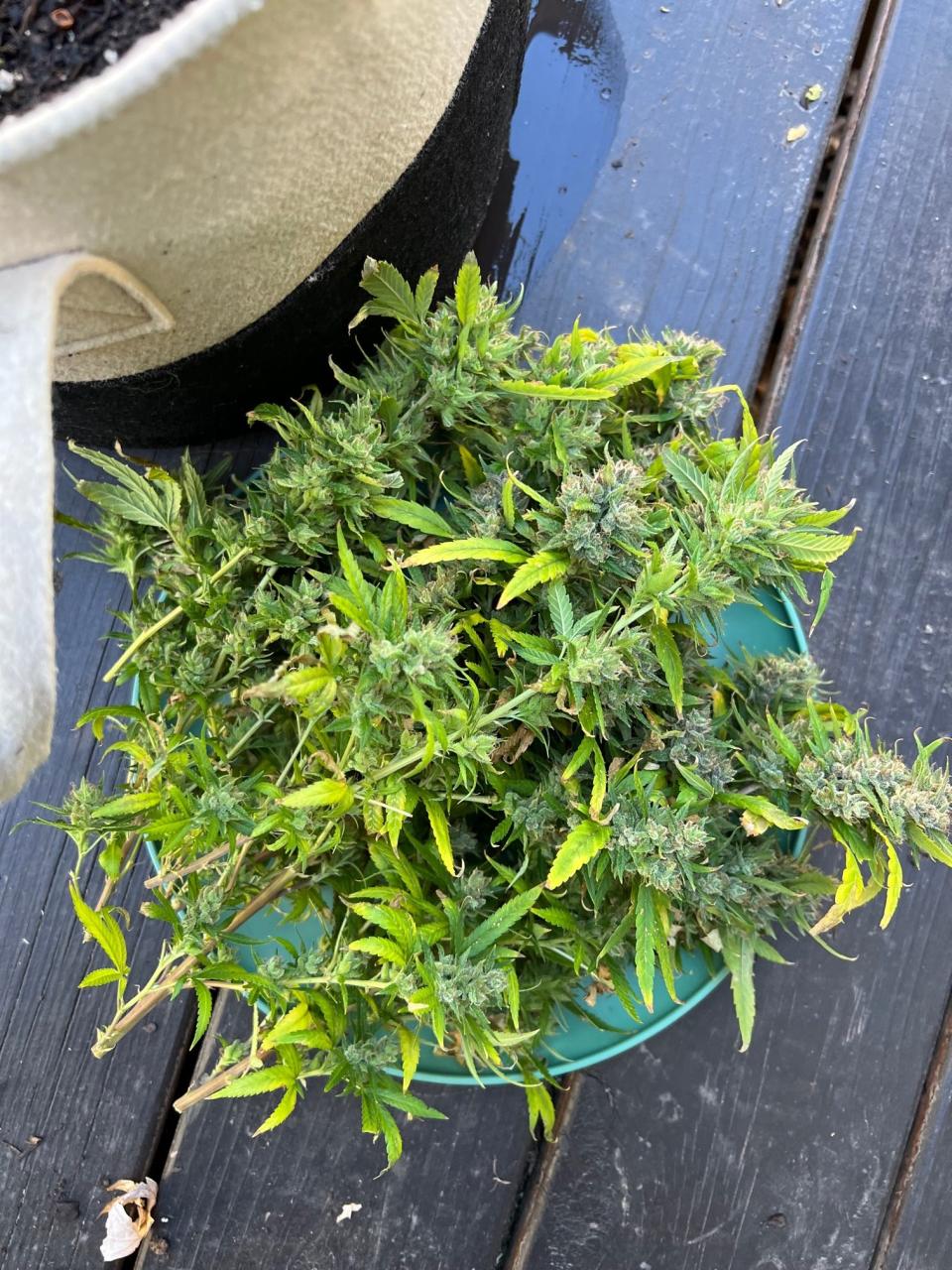
"Weed plants are super sturdy and strong, and I learned that in the growing process, later on, but in the beginning they are literally like babies," Cornish said.
This year, Cornish started with 16 seeds he was gifted. He was unsure of the exact strains he grew last year, but said this year he is growing White Widow, Blue Dream and Grandpa's Stash.
Cornish obtained a patient cultivation card, as a medical marijuana patient, last spring to cultivate at home. On Feb. 3, the Department of Cannabis Regulation began accepting applications for personal consumer cultivation cards.
As of Thursday, Feb. 23, the department had approved 394 consumer personal cultivations cards, according to Department of Health and Senior Services Communications Director Lisa Cox.
How do you get a personal cultivation card?
Missourians 21 and up may apply for either a consumer personal cultivation card or a patient cultivation card. Consumer cards are for those who wish to grow and use marijuana recreationally; patient cards are for medical marijuana patients.
To apply for a consumer personal cultivation card, consumers first must register on the Department of Health and Senior Services' online portal, accessible at mo-public.mycomplia.com/#!/signin. After completing the necessary information, a verification email will be sent with a link to create a new application.
Consumers must provide their name, address, Social Security number, a digital photo of themselves, a government-issued photo ID and the $100 application fee. If a consumer lives with another cultivator, the consumer must list this cultivator's name and application ID too.
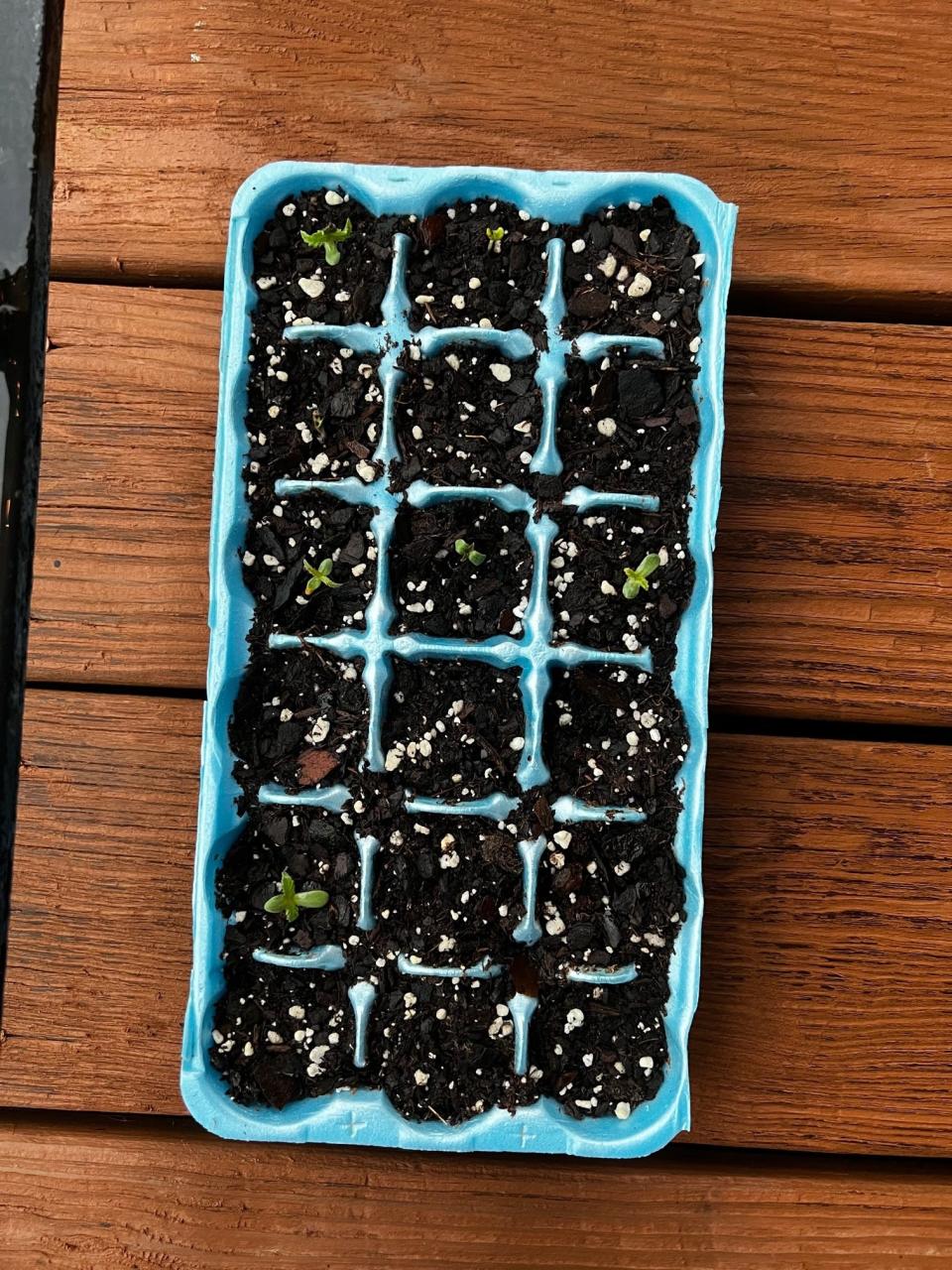
Once approved, the consumer will receive an email with a downloadable license. Often, consumers can expect to hear back from the department about the status of their application the same day, but it may take up to two business days, Cox said.
Medical marijuana patients interested in cultivation may indicate so on a new application or add cultivation to an already approved license. The Department of Health and Senior Services outlines this process on its website, accessible at bit.ly/3KyEW1C.
How much marijuana can you grow?
Individuals with consumer cultivation cards may grow up to:
Six flowering plants;
Six nonflowering plants over 14 inches tall; and
Six nonflowering plants under 14 inches tall, all in one enclosed, locked facility.
Two individuals may both hold consumer cultivation cards and cultivate under the same roof, but no more than 12 flowering plants, 12 nonflowering plants over 14 inches and 12 nonflowering plants under 14 inches may be cultivated at one private residence.
Plants and marijuana produced that exceed the legal three ounce possession limit must be kept at a private residence in a locked space. These regulations are consistent for both consumer and patient cultivation cards.
Once a cultivation card is obtained, folks can start legally growing.
Understand the stages of growth, care for your plants
Before getting seeds or clones (small marijuana plants) in soil, cultivators should familiarize themselves with the stages of marijuana plant growth and how they can be best cared for.
The first two steps of the growth process are germination and seedling. During these beginning stages, the marijuana plant begins to sprout roots and develop leaves. For both of these stages, plants should receive 18 hours of light and six hours of darkness, according to Leafly, an online marijuana resource.
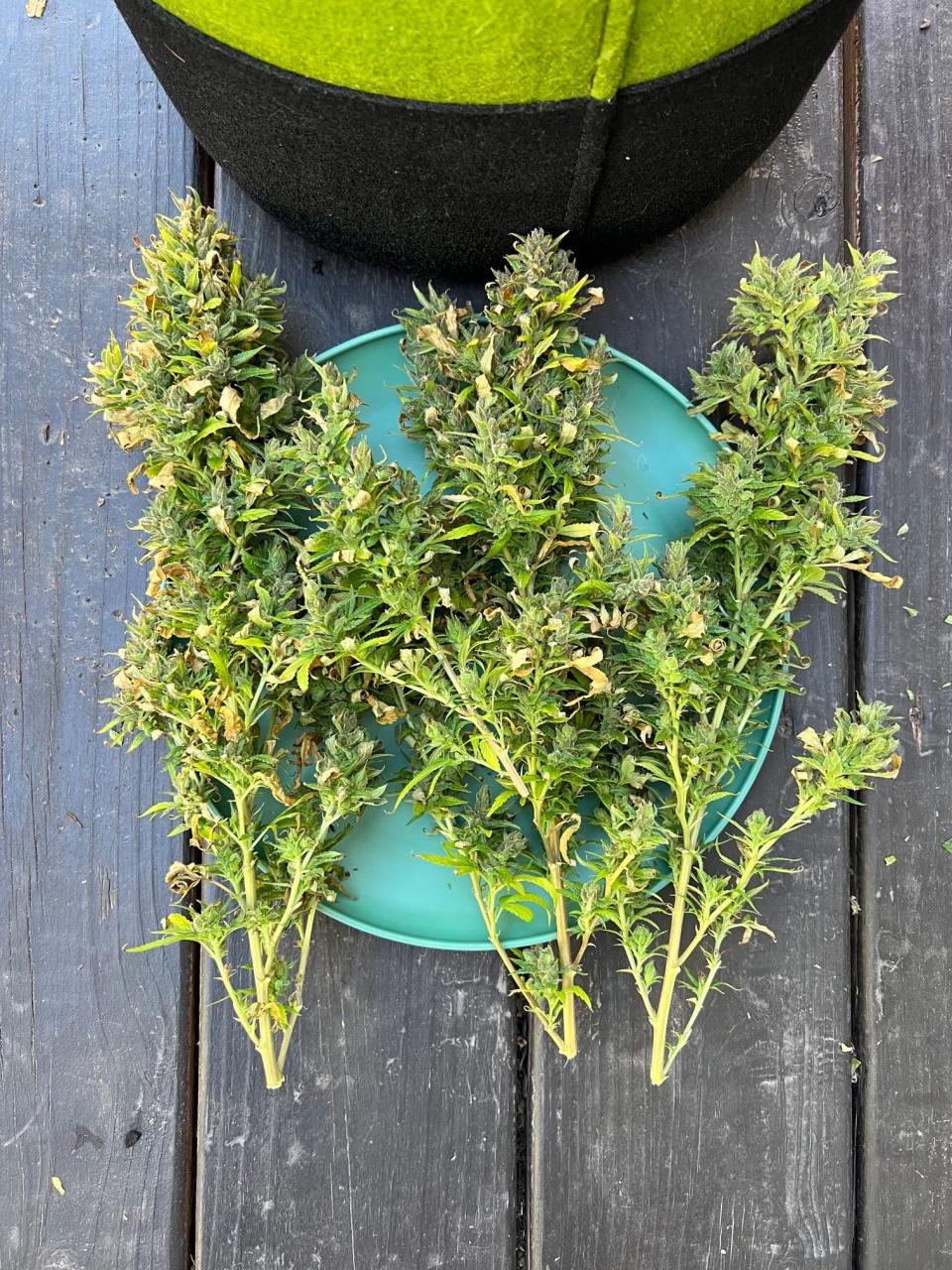
The vegetative stage is next, when marijuana plants are the most delicate. Plants should be transferred to larger pots, allowing roots and leaves to develop fully.
Marijuana plants in the vegetative stage should receive 18 hours of soft light and six hours of darkness in low humidity for three to 16 weeks. Flora Farms Director of Cultivation Mark Buddemeyer said at the Flora Farms cultivation facility in Humansville they use 315-watt LED and fluorescent lights toward the end of the vegetative stage.
More:As recreational sales begin, Humansville's Flora Farms ships a record amount of marijuana
Once his plants began to sprout, Cornish said he used two sunset lamps (10 watts each) for two months, before switching to a fluorescent tube grow light for two months. Then, he used a 420-watt LED panel light for four months before transitioning his plants to outside.

The final stage of growth for a marijuana plant is flowering, when the plant begins to develop bud. This stage lasts between eight and 11 weeks. Plants should receive 12 hours of direct, intense light and 12 hours of darkness to simulate fall. Buddemeyer recommended lights close to 1,000 watts during this final stage.
Cultivators gauge when to harvest based on the opacity and color of their plants' trichomes, the microscopic hairs on cannabis buds.
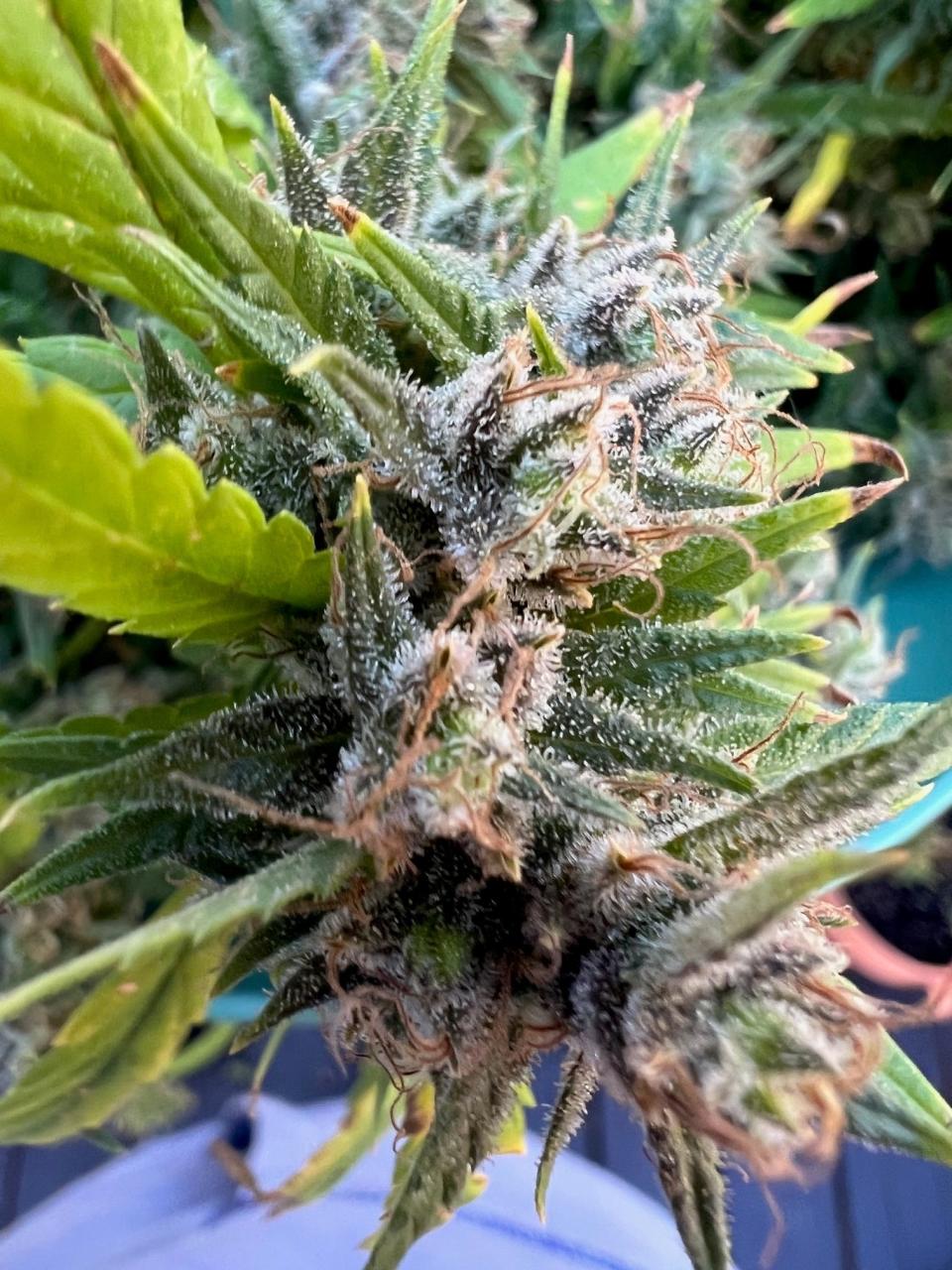
"You use a magnifying scope to look at the trichomes, the frosty stuff you see on the plants," Buddemeyer said. "They'll start off in the flowering process; the bulbous heads on the top of the trichomes will be clear. Then they go cloudy as they start to mature and if they overripen, they go amber. You want to harvest it right whenever you are starting to see about 10% of those going amber."
Cultivators should expect about a quarter of a pound of bud from one plant, Buddemeyer said.
Commonly, folks can purchase seeds or clones (small marijuana plants) to begin cultivating with at home. If purchasing a clone, you will begin your cultivation during the vegetative stage.
Weigh the pros, cons of indoor and outdoor grows
Marijuana can be grown both indoors and outdoors. Indoor grows allow more manipulation by a cultivator and multiple harvests a year, but they are more expensive, as necessary lighting, watering and humidity equipment are required. Outdoor grows are cheaper but cultivators have less control of the environment.
Setting up an indoor home grow can cost between $1,000 and $5,000 depending on how high-tech a cultivator wants to get, Buddemeyer said.
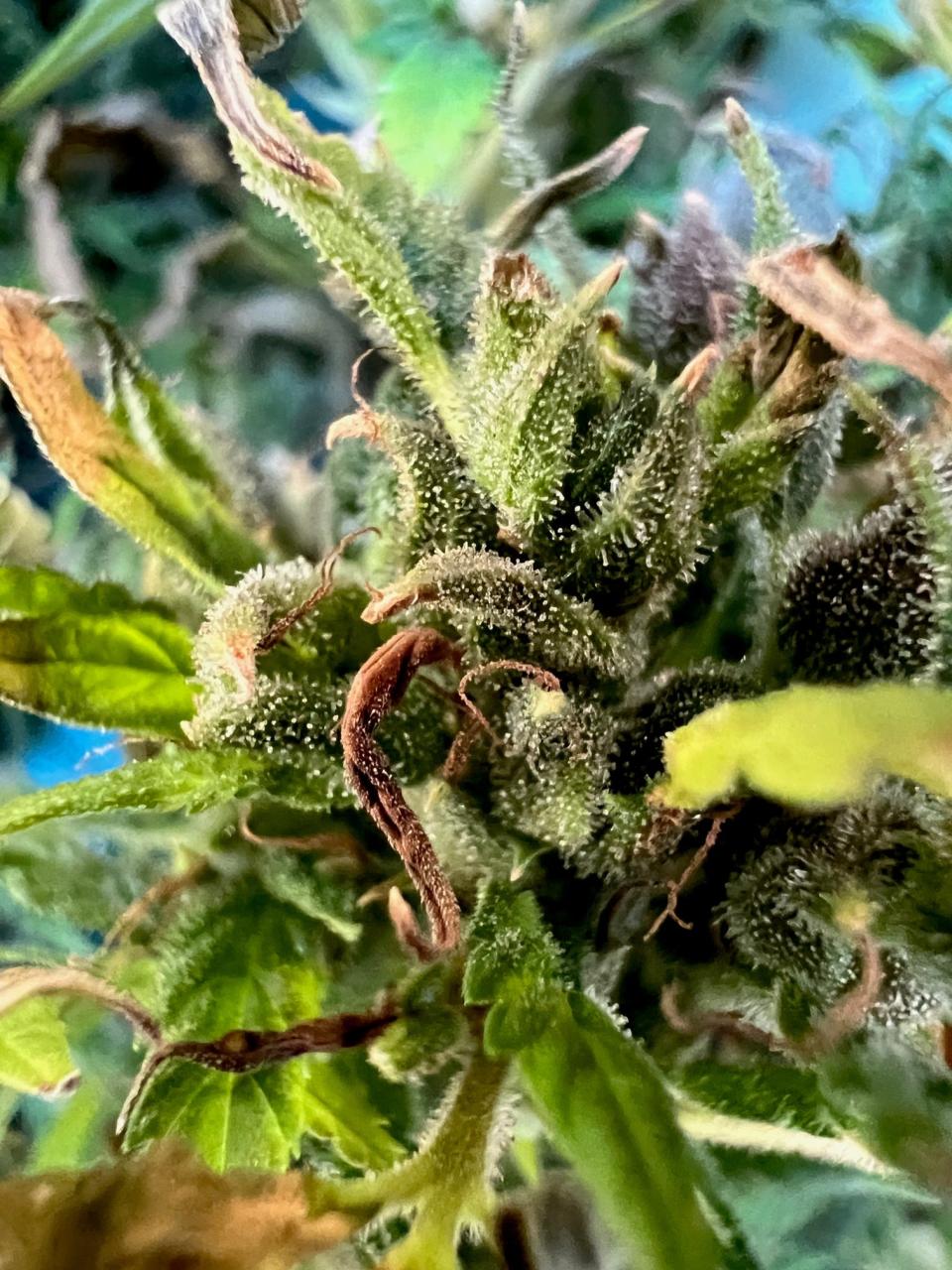
Cornish said he spent about $550 on his indoor setup, including his $500 LED panel light. This doesn't include a high electricity bill, which spiked to $400 per month for a three-month period when Cornish was using frequent and high intensity light during his plants' vegetation and flowering stages.
Due to these high costs, Cornish said he is going to focus the majority of his grow outside.
If growing indoors, prep a clean, well-ventilated room
Pests and mold are the most common pitfalls of home grows, Buddemeyer said. Small bugs like spider mites enjoy eating marijuana plants and if a grow room does not have proper ventilation, the plants' buds can get thick and hold water, resulting in mold. Much of this can be avoided with a well-ventilated room.
Through the majority of marijuana's growth process, plants should be receiving constant air flow. Leafly recommends clip-on fans for small spaces and oscillating fans for larger grow rooms. Fans should not be directly pointed at the plants but rather ciriculate the air around them.
In addition, cultivators should not allow pets or other home cultivators near their plants to avoid the spread of pests.
Start with Indica-dominant strains
Buddemeyer recommended new home cultivators start with Indica-dominant strains, as they are shorter and easier to grow indoors. Indica-dominants also ripen faster during the flowering stage, 55 to 60 days, compared to Sativa-dominant strains which take anywhere between 80 to 90 days to ripen.
While there are over 700 different strains of marijuana, cultivators and dispensaries in Missouri must classify their products as either "Indica" or "Sativa," Flora Farms President Mark Hendren told the News-Leader during a visit to the Humansville facility in February.
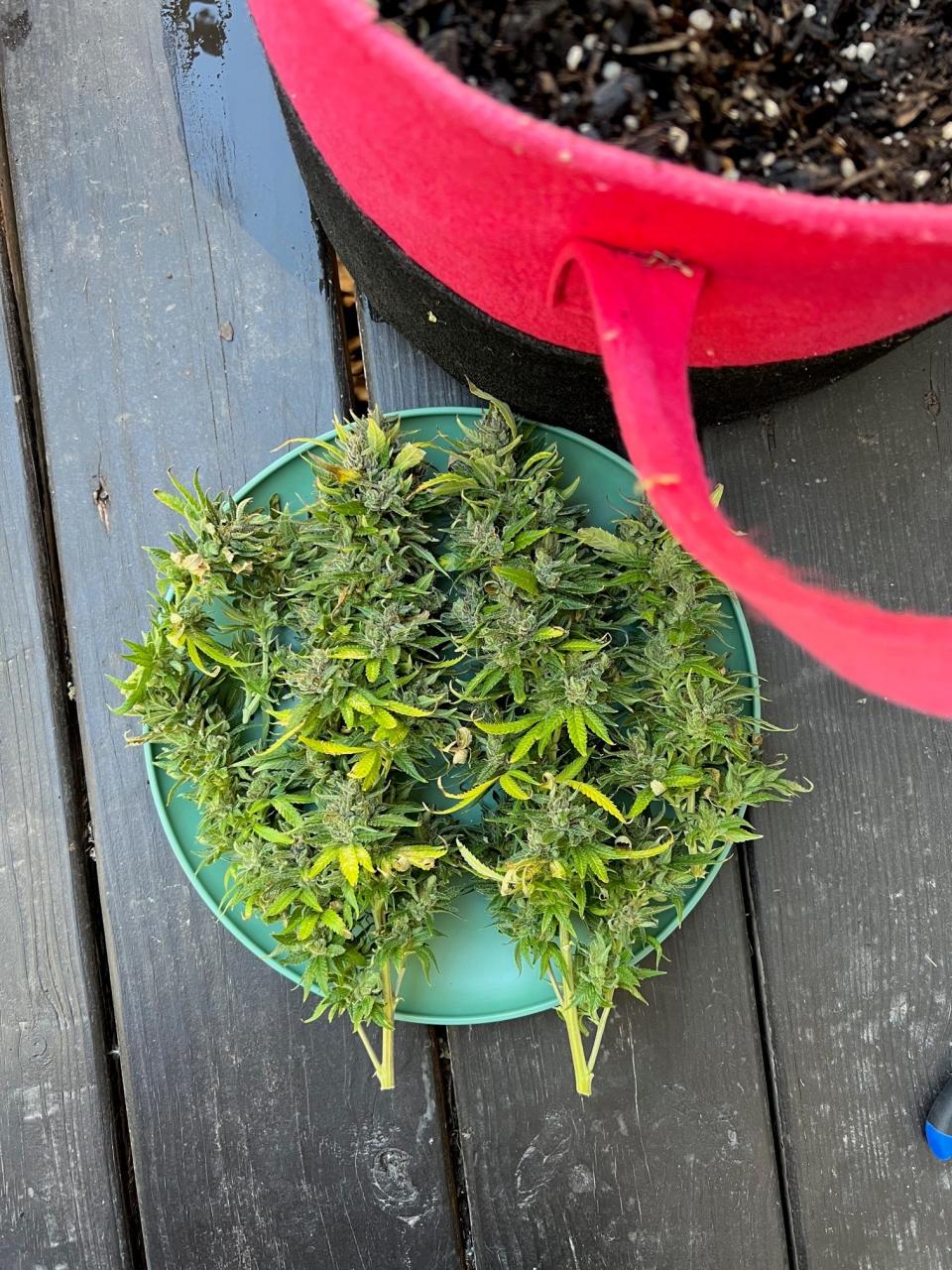
Keep soil dry in the beginning, water more frequently later on
Buddemeyer said one of the most common reasons for failure during the beginning stages of cultivation is overwatering.
"Whenever they're small, they don't need a lot of moisture," Buddemeyer said. "They actually need to dry out quite a bit. If you can get your root zone really established on your vegetative plants, you can (water) them very aggressively later on."
During the flowering stage, Buddemeyer recommended watering plants once a day.
When it comes to choosing soil, different strains prefer different types but marijuana isn't too picky. Leafly recommends a high-quality potting soil for first-time growers and advises to stay away from soil containing artificial extended release fertilizer, like Miracle Gro.
If you grow marijuana at home, can you sell it?
Possessing a personal cultivation card is not enough to legally sell marijuana in Missouri.
More:Does Amendment 3 allow Missourians to make or sell marijuana edibles?
To sell marijuana legally, a medical marijuana dispensary license, comprehensive marijuana dispensary license (allowing the sale of both medical and recreational marijuana) or microbusiness dispensary license is required. These licenses are obtained through the Department of Cannabis Regulation, within Missouri's Department of Health and Senior Services.
This article originally appeared on Springfield News-Leader: New to marijuana cultivation? Here are some tips for successful grows

